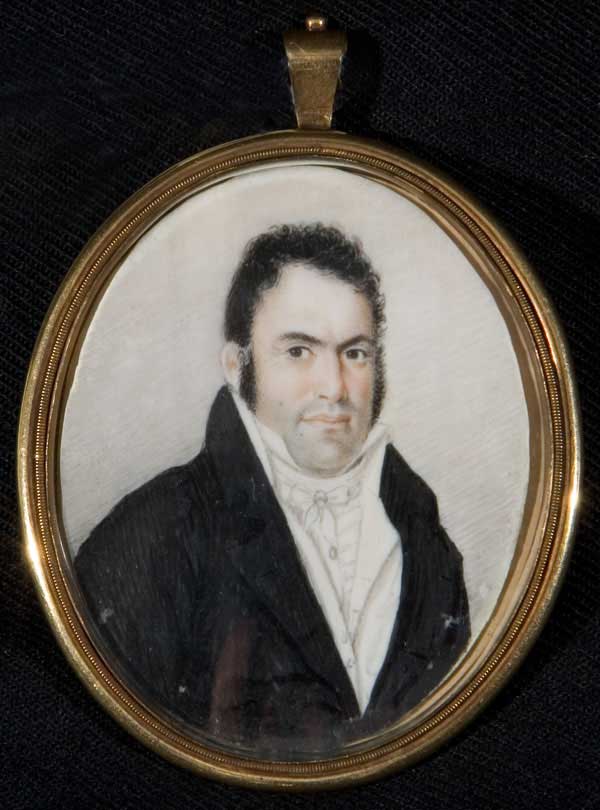
Miniatures from the eighteenth and nineteenth centuries were typically constructed from ivory and painted on with watercolor. As one can see in this miniature of Judah Eleazer Lyons, this is very much the case; his face is defined in muted pastel colors, and the only real richness in tone can be found in the dark grays, browns, and blacks that are present in his hair, eyes, and coat. Despite this being such a small medium, only three by two and a half inches in size, this miniature artist was able to capture Lyons’s facial features in lovely detail, including eye wrinkles and the definition of his morning shadow. Being that this miniature is encased in a gold locket (as many miniatures are), it can be inferred that this portrait was likely kept as a sign of affection by one of Lyons’s family members. This is significant because it emphasizes kinship and community within the large Paramaribo Jewish population while also demonstrating how Jews of both the elite and working classes showcased their sense of refinement and social status.
Now check your knowledge on miniatures using this fill in the blank quiz!
Sources:
“Judah Eleazer Lyons.” Loeb Jewish Portrait Database, loebjewishportraits.com/biographies/judah-eleazer-lyons/.
Rosengarten, Theodore and Dale Rosengarten, eds. A Portion of the People: Three Hundred Years of Southern Jewish Life. Columbia: University of South Carolina Press, 2002.

Caitlin, this is one of my favorite miniatures! He is the father of JJ Lyons, who was one of the most important religious leaders of congregation Shearith Israel in New York. I also love his clothes which are very much in the fashion of Beau Brummell https://en.wikipedia.org/wiki/Beau_Brummell
We should definitely talk about his high, highly-starched collar and his jacket.
Excellent attention to detail and nice historical background on the form!
best,
Laura